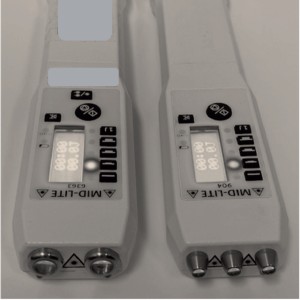 Smart Citations
Smart CitationsSee how this article has been cited at scite.ai
scite shows how a scientific paper has been cited by providing the context of the citation, a classification describing whether it supports, mentions, or contrasts the cited claim, and a label indicating in which section the citation was made.
In post-natal women with nipple pain, does photobiomodulation therapy (PBMT) at 660 nm compared with sham PBMT reduce pain on breastfeeding? A case series during COVID-19
The analgesic role of photobiomodulation therapy (PBMT) for breastfeeding women with nipple pain is inconclusive. This study aimed to determine the efficacy of PBMT at 660 nm in post-natal women with nipple pain planning to exclusively breastfeed. A randomised, placebo-controlled clinical study was initiated at a tertiary hospital in Brisbane, Australia on the inpatient maternity wards from May 2020 to September 2020. Eligible participants were randomised into two groups, an intervention group receiving usual care and PBMT (Group A) and a control group receiving usual care and sham PBMT (Group B). Usual care involved consultation with a midwife and/or lactation consultant to assist with infant latching and breastfeeding positioning. PBMT (660 nm; 250 Hz; 17 mW; 0.5 cm2 spot size) was administered three times within 24 hours. Nipple pain was the primary outcome measure analysed using a Visual Analogue Scale. Quality of life (QoL) and the participants’ perceived efficacy of treatment were secondary outcome measures evaluated using the PROMIS Global Short Form and a combined 5-point Likert scale and thematic analysis, respectively. Due to the impact of COVID-19, only 10 participants were recruited. Compared to sham, three applications of PBMT at 660 nm provided no significant difference to participants’ nipple pain, QoL or perceived efficacy of treatment. Three key themes of PBMT treatment were simplicity, safety and support. This study was unable to demonstrate the impact of PBMT at 660 nm on relieving nipple pain due to low participant numbers. An adequately powered RCT with COVID-19 modifications, is recommended.
How to Cite

This work is licensed under a Creative Commons Attribution-NonCommercial 4.0 International License.
PAGEPress has chosen to apply the Creative Commons Attribution NonCommercial 4.0 International License (CC BY-NC 4.0) to all manuscripts to be published.

 https://doi.org/10.4081/ltj.2023.315
https://doi.org/10.4081/ltj.2023.315





